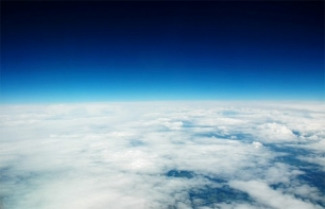The end of the last glacial age rapidly increased CO2 concentrations in the atmosphere

A research published in Nature for the first time describes how the thaw of the last glacial age produced changes in ocean currents which caused large quantities of CO2 stored deep in the oceans to be released into the atmosphere. This gave way to an acceleration in the rise of the planet's temperature due to the greenhouse effect and the end of the glacial period. The research was carried out with the participation of UAB's ICREA researcher Rainer Zahn, who described the combination of effects these emissions caused in the two hemispheres by studying concentrations of isotopic components in marine microfossils. The result of this study reveals an important mechanism and the influence of the ocean in CO2 concentrations found in the atmosphere.
An international scientific team, including Rainer Zahn, ICREA researcher of the UAB Department of Geology and member of the UAB Institute of Environmental Science and Technology (ICTA), for the first time can offer details on the thawing period of the last glacial age, approximately 15,000 years ago, and how the release of large amounts of CO2 into the atmosphere in only a few centuries caused an acceleration in the rise in temperature throughout the planet due to the greenhouse effect and the end of the glacial age.
Throughout the last glacial period, storage of CO2 at poorly ventilated abyssal ocean levels produced a descent in CO2 levels in the atmosphere, and this in turn increased concentrations of specific isotopes connected with CO2 (stable carbon isotopes Carbon-13 and Carbon-12). During the thawing period, when a large part of the ice covering the continents had disappeared and began to melt in the ocean at high latitudes, CO2 was quickly released into the atmosphere. However, scientists suspected that thawing was not necessarily the only thing that caused an increase in the amounts of CO2 in the atmosphere.
The release of CO2 stored in the water was brought about by changes in ocean circulation, which can be tracked with these concentrations of carbon isotopes. Small living organisms (known as microplanktons) found in the oceans incorporated the isotopes into their organism; analyses of these plankton fossils thus reveal the ocean's carbon isotope composition in different moments of the past. Organisms living closer to the surface were testimonies to the changes in gases released from the ocean to the atmosphere and in analysing the presence of different radiocarbon isotopes in these fossils - found in large amount on the seabed - scientists were able to reconstruct the events of that period.
In the article, researchers confirmed that thawing was not the only phenomenon behind the increase in CO2 levels in the atmosphere and deduced that the process of "ventilation" of deep waters consisted in two stages. The first occurred with ice melting in sub-polar areas of the North Atlantic ocean, which caused a variation in water circulation and in the distribution of carbon isotopes in all other oceans, including those in the southern hemisphere. In the second stage however, the warming of oceans in the south produced a change in wind patterns and this changed the dynamics of surface water. The research demonstrates that in this stage, CO2 stored in intermediate-depth waters were upwelled by surface currents and released into the atmosphere due to changes in surface winds.
With this discovery, published recently in Nature, researchers have helped to further the understanding of key processes which produced the great climate changes of the past and which are essential in forecasting the evolution of the climate in the future.
References
"Upper-ocean-to-atmosphere radiocarbon offsets imply fast deglacial carbon dioxide release". Kathryn A. Rose, Elisabeth L. Sikes, Thomas P. Guilderson, Phil Shane, Tessa M. Hill, Rainer Zahn & Howard J. Spero. Nature doi:10.1038/nature09288.


